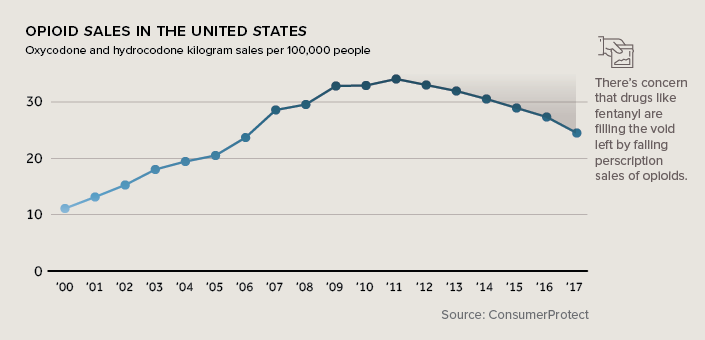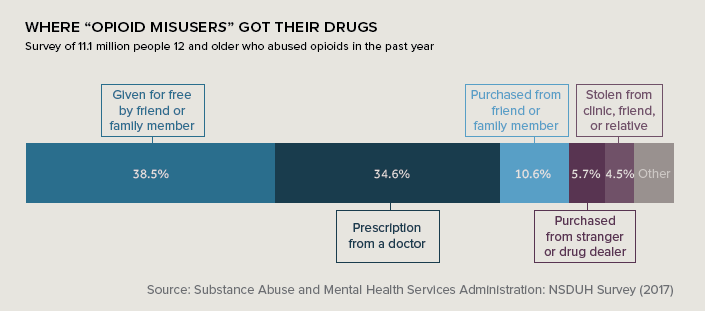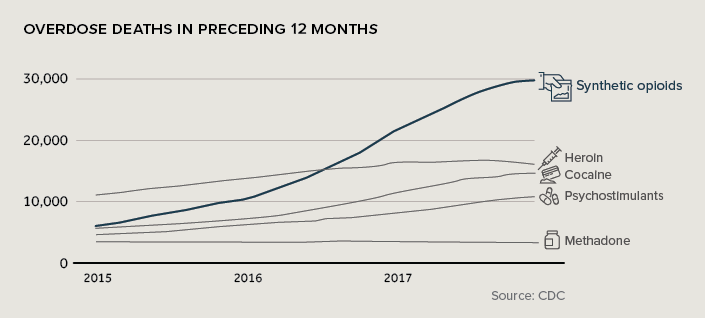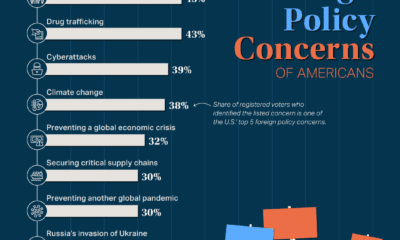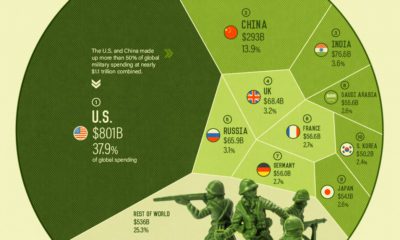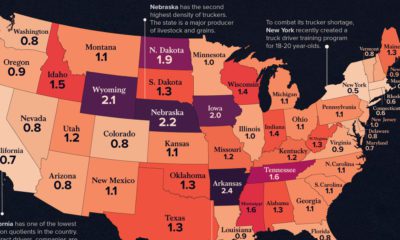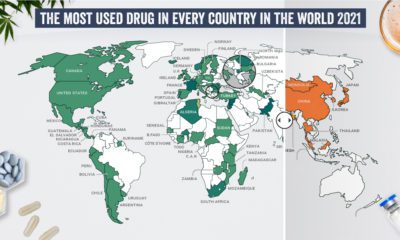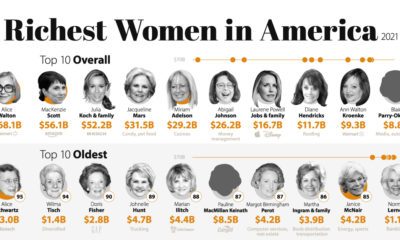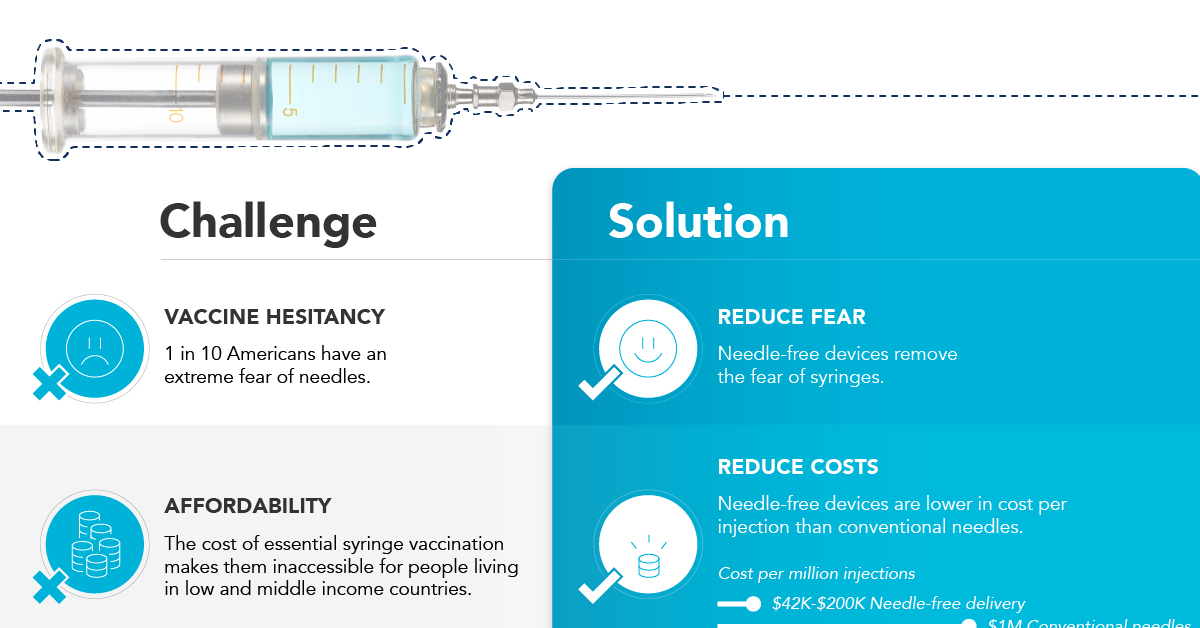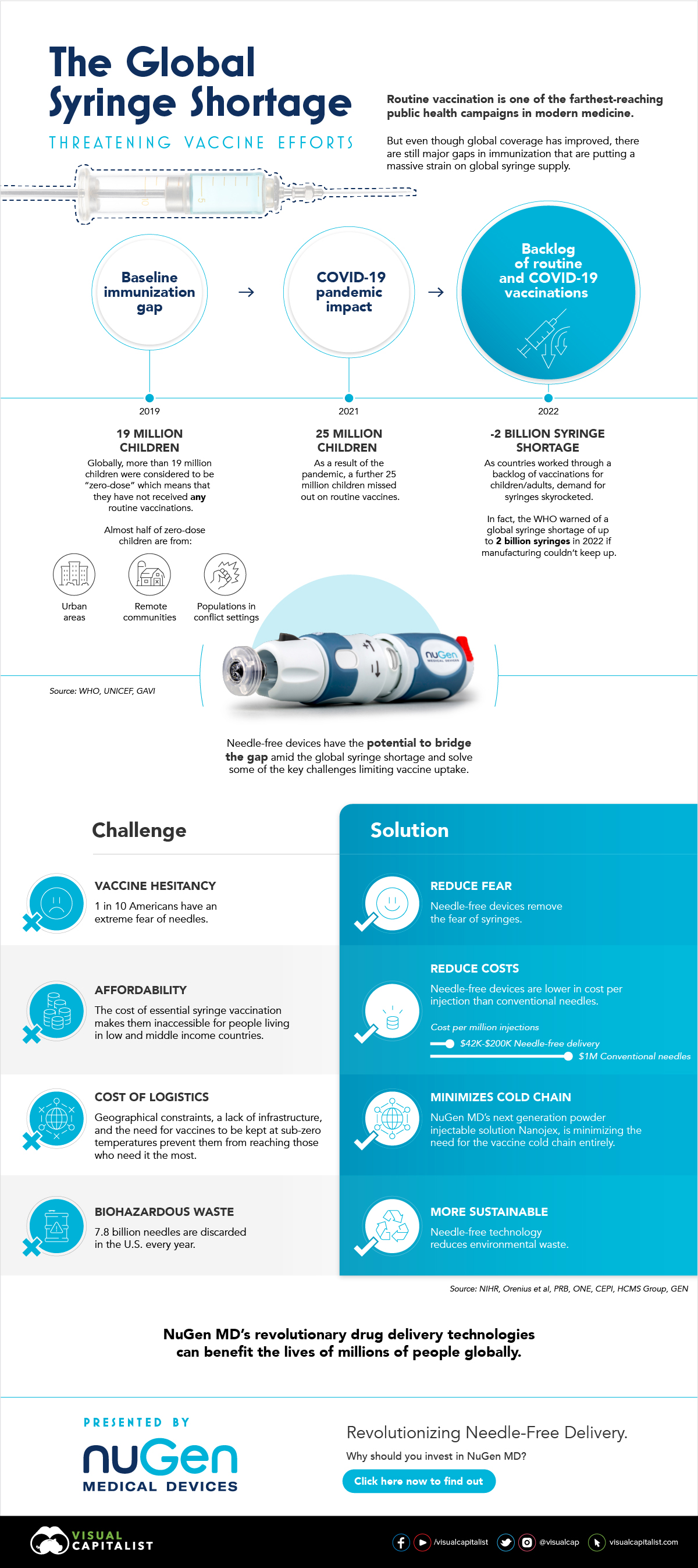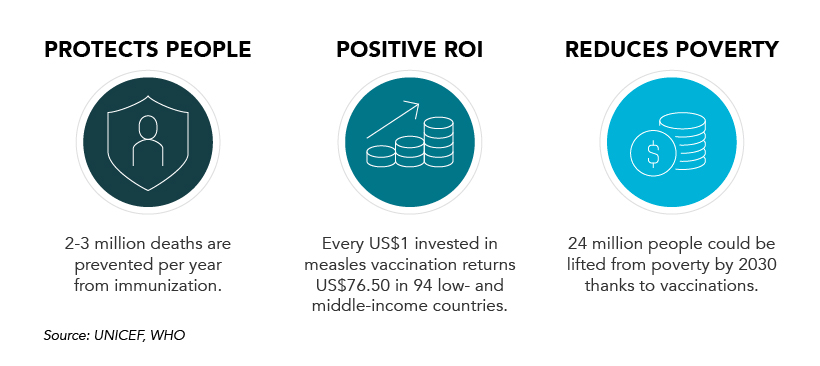While opioid abuse is a nationwide problem, there are specific areas that are being hit harder by this epidemic. Using the location data above, from NORC at the University of Chicago, we can see clusters of counties that have an extremely high rate of overdose deaths. Between 2012 and 2016, West Virginia, Kentucky, and Ohio saw a combined 18,000 deaths related to opioid abuse. A sharp increase in prescribed opioid-based painkillers and the rise of illegal fentanyl – which is up to 50 times stronger than heroin – has unleashed the worst public health crisis in American history. It’s a problem that can be tough to understand, but by delving into the data, some key observations emerge.
Doctors Prescribed a lot of Pain Killers
Beginning in the 1980s, prescription opioids like oxycodone and hydrocodone were heavily marketed as a treatment for pain, and at the time, the risk of addiction to these substances was downplayed. Opioid prescriptions nearly tripled between 1991 and 2011.
Sales of these powerful painkillers are beginning to drop, in part because the risk of addiction has now been widely publicized. Another decelerating factor is the crackdown on clinics and pharmacies that were over-dispensing painkillers, in some cases directly feeding the elicit drug market. In 2015, nearly 100 million Americans were prescribed painkillers by their doctor. A recent survey showed one-third of people who abused prescription painkillers in the past year got pills directly from a physician.
This abundance of pills impacts the community at large when excess pills are sold, stolen, or simply given to others. In fact, receiving painkillers from a friend or family member was the most common gateway to abusing opioids.
Fentanyl is Killing a lot of People
If doctors have been prescribing opioids for decades, what is causing this recent spike in overdoses? The answer, for the most part, is fentanyl. This synthetic opioid presents a problem because it’s extremely potent – it only takes about 2 milligrams to overdose on the drug. Since much of the fentanyl on the market is sourced illegally, doses can and do exceed this amount on a regular basis. As a result, overdose deaths related to opioids have skyrocketed in recent years:
Overdoses are the tip of the Iceberg
The thousands of overdose deaths around the country are the most extreme symptom of the opioid epidemic, but the problem runs much deeper. In 2017, there were over 11 million “opioid misusers” in the United States. To put that number in perspective, that’s equivalent to the entire population of Ohio. In fact, the problem is so widespread, that it’s suspected to be influencing workforce participation rates. The health care burden of the crisis is also staggering. The cost of opioid abuse ranges from $10,000 to $20,000 in annual medical costs per patient. The hard truth is that, unless bold action is taken, the opioid epidemic is projected to claim nearly 500,000 lives over the next decade. on In the above infographic from NuGen Medical Devices, we explore the factors leading to the syringe shortage and take a look at the company’s innovative needle-free solution that could play an important role in closing the immunization gap.
The Immunization Gap
Even before the COVID-19 pandemic, millions of people around the world struggled to get access to routine vaccinations. In fact, as of 2019 more than 19 million children around the world were considered to be “zero-dose” which means that they did not receive any routine vaccinations. Moreover, when the COVID-19 pandemic hit, global immunization dropped even further with 25 million children missing out on routine vaccines in 2021 alone.
Why is Immunization So Important?
Vaccinations prevent against over 20 life-threatening diseases and save between 2-3 million deaths per year, making them—as the WHO describes—the foundation of healthcare systems and an indisputable human right. As countries work through a backlog of vaccinations to close the immunization gap that has worsened since the pandemic, demand for syringes has significantly increased.
The Result: A Global Syringe Deficit
In 2022, the WHO warned that we could see a shortage of up to 2 billion syringes if manufacturing can’t keep up. This could result in the severe disruption to routine vaccinations and promote unsafe recycling of syringes in order to administer vaccines. But the issue goes far beyond a supply shortage of syringes. COVID-19 has brought conventional syringe vaccines into sharp focus, with many criticizing the challenges associated with them. With conventional needles facing so many challenges, it’s no surprise that investors are taking interest in viable alternatives. What’s more, these alternatives don’t just apply to vaccinations, they can also work for people with diabetes, dentists, and pet care.
Enter Needle-free Devices from NuGen MD
Needle-free devices have the potential to bridge the gap in immunization amid the global syringe shortage, solve some of the key challenges limiting vaccine uptake, and more importantly, benefit the lives of millions of people.
How Do They Work?
NuGen’s needle-free devices use a simple spring-loaded mechanism which uses pressure to release the liquid drug and penetrate the skin. In less than one-tenth of a second, the drug is dispensed more safely and evenly compared to needle syringes. It’s also virtually painless and leaves no mark on the skin.
Interested in investing in NuGen Medical Devices? To learn more about their plans to pioneer the future of needle-free drug delivery, click this link now.
